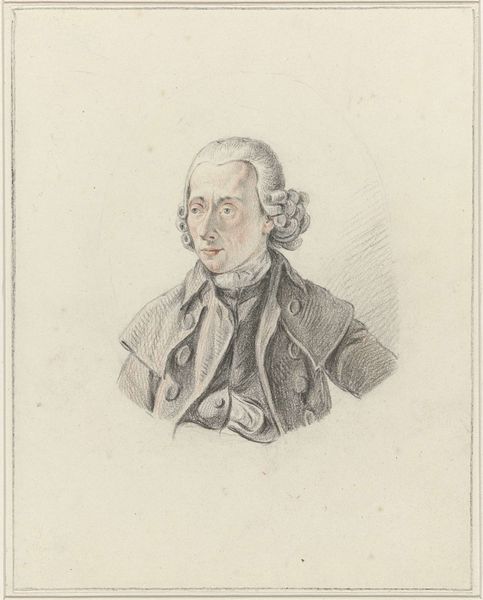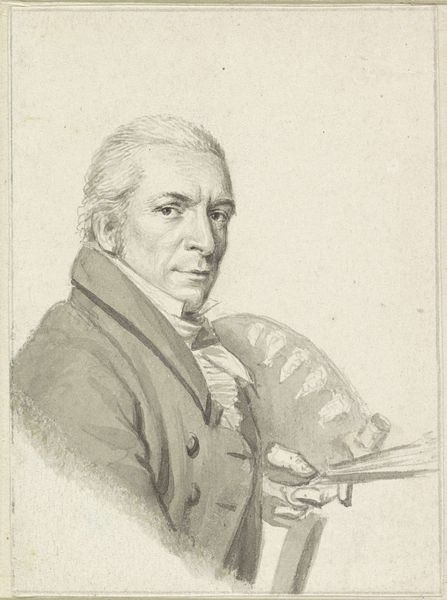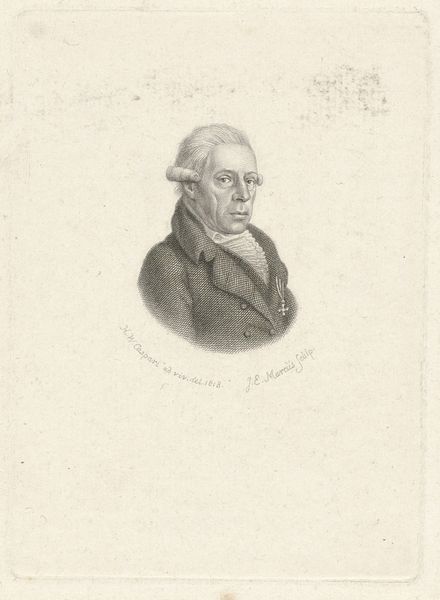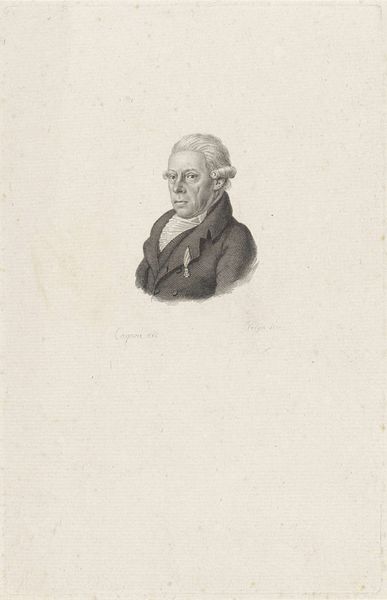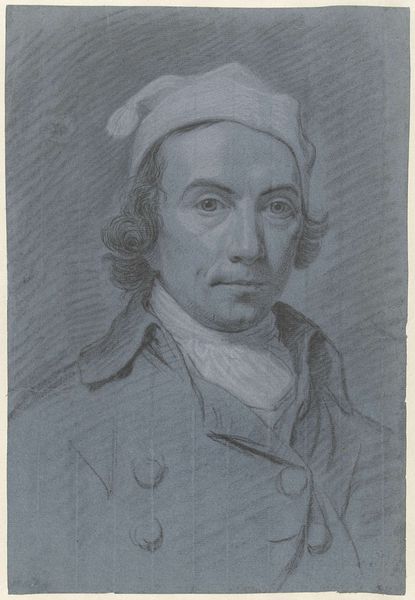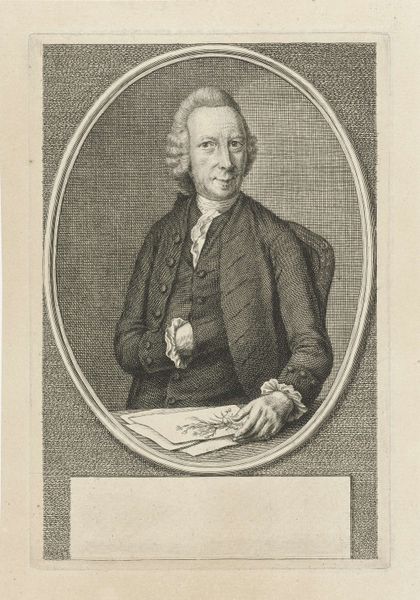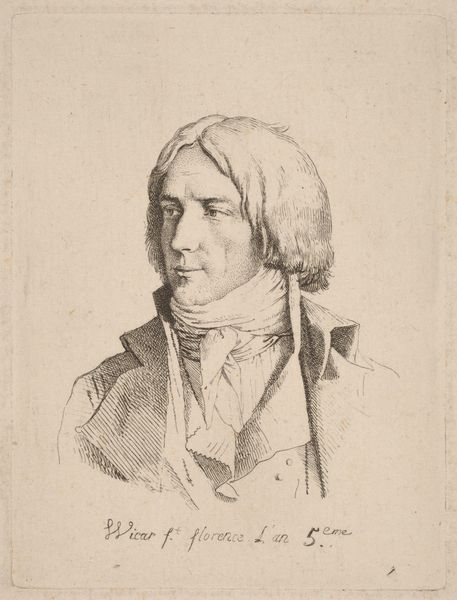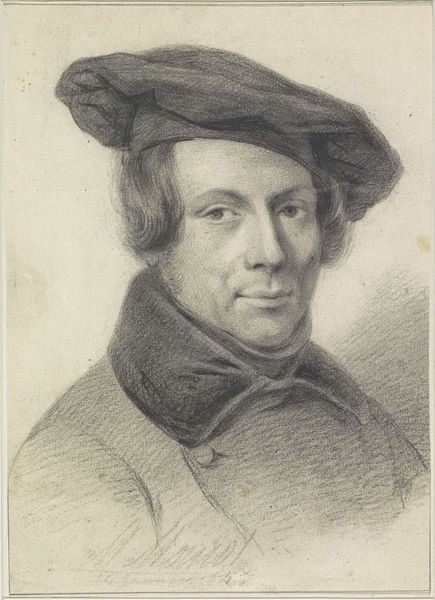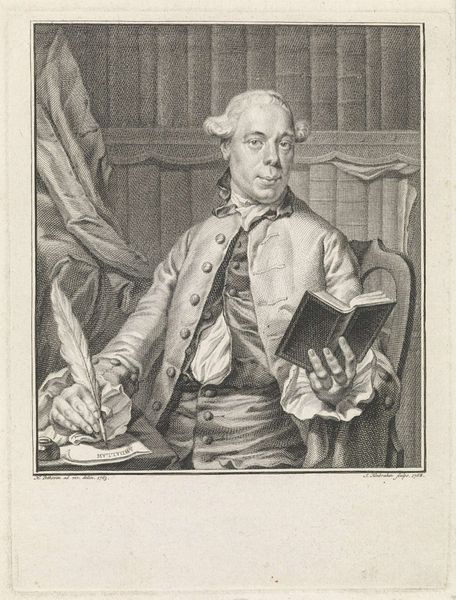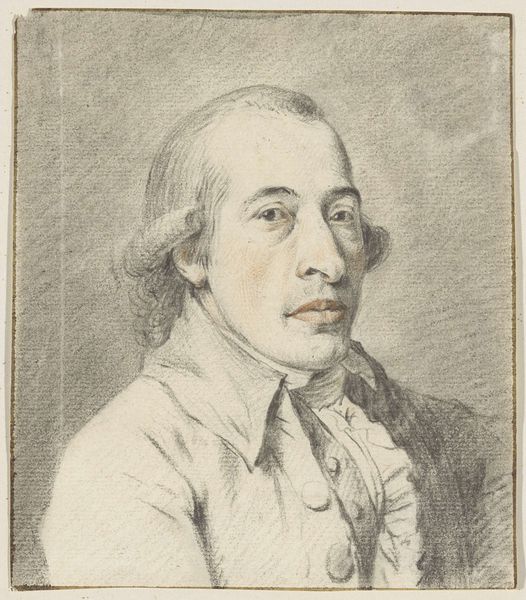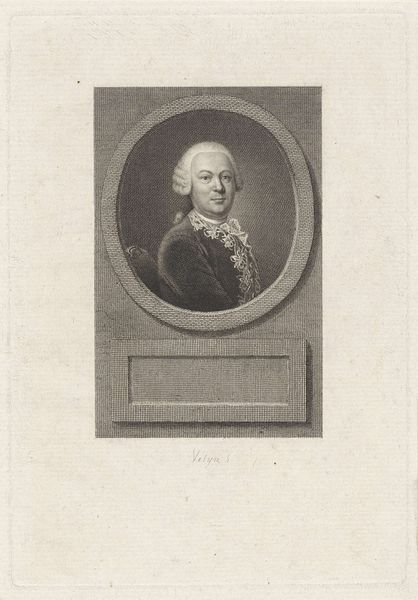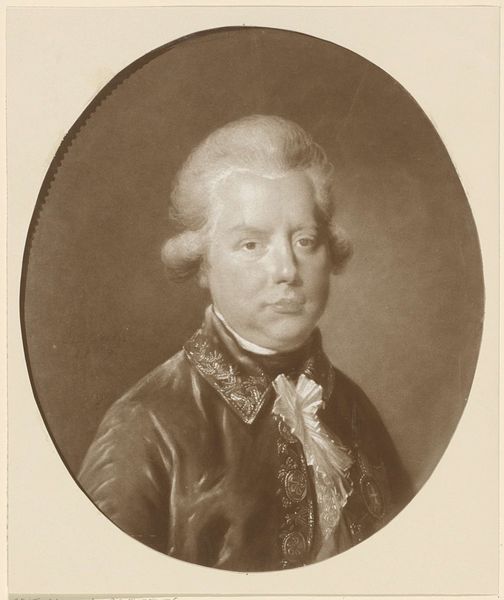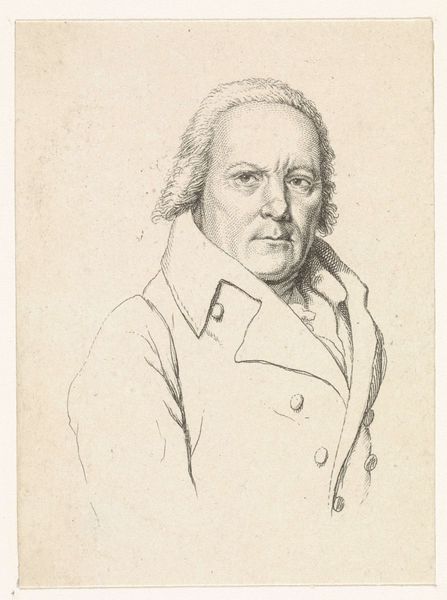
drawing, pencil
#
portrait
#
drawing
#
neoclacissism
#
facial expression drawing
#
self-portrait
#
pencil sketch
#
portrait reference
#
pencil drawing
#
pencil
#
animal drawing portrait
#
portrait drawing
#
genre-painting
#
facial portrait
#
portrait art
#
fine art portrait
#
digital portrait
Dimensions: height 194 mm, width 166 mm
Copyright: Rijks Museum: Open Domain
Curator: Wybrand Hendriks rendered this sensitive "Portret van Hendrik Tavenier" somewhere between 1754 and 1831. The Rijksmuseum holds it in its collection. What are your initial thoughts on it? Editor: The fragility of life. It looks almost like a preliminary sketch; an immediacy comes through the textures and limited color. Curator: Indeed. Notice the sitter's gaze, directed slightly away. He presents the visual cues of his status with wig and simple but elegant frock coat; yet the work has the feel of a very personal, almost hurried observation. The artist captures the sitter with an honesty typical of the period’s Neoclassical artistic values. The slight flush of color on his face reads symbolically like a man actively circulating in his community. Editor: Is it naive to imagine that “active circulation” was not afforded equally to all, right? When viewing this work, it’s vital to remember that not all individuals within society during the period enjoyed access to artistic patronage or even basic freedoms. This reality invites discussion about societal structure and power dynamics of that time. How might these elements impact both the construction and our understanding of portraiture? Curator: Portraiture certainly acted as a method of immortalizing individuals and ideologies that support hierarchy, class, and specific understandings of civic virtues. Looking closely at "Portret van Hendrik Tavenier" though, I see both an emblem of its time as well as its gentle undermining through simple candor. Editor: That is certainly worth pondering. The subject’s wrinkles are so pronounced, creating a depth that feels like he could start speaking any moment. Do you think that the slight smirk challenges notions of elite status or is that something I bring into the experience when looking? Curator: Well, the Neoclassical interest in direct observation as truth is clearly represented, but so are the enduring, complex elements of human nature which remain across time. His age certainly communicates status. The wrinkles act as signifiers of wisdom but are coupled with signs of merriment, giving this image greater power and presence, and complicating the sitter’s story. Editor: I see the story's complexity too and what happens when the politics of representation intersect with our present considerations. This provides insight into an era characterized both by its elegance and its rigid social constraints. Curator: That's a fine lens for examining and honoring this intriguing character.
Comments
No comments
Be the first to comment and join the conversation on the ultimate creative platform.
